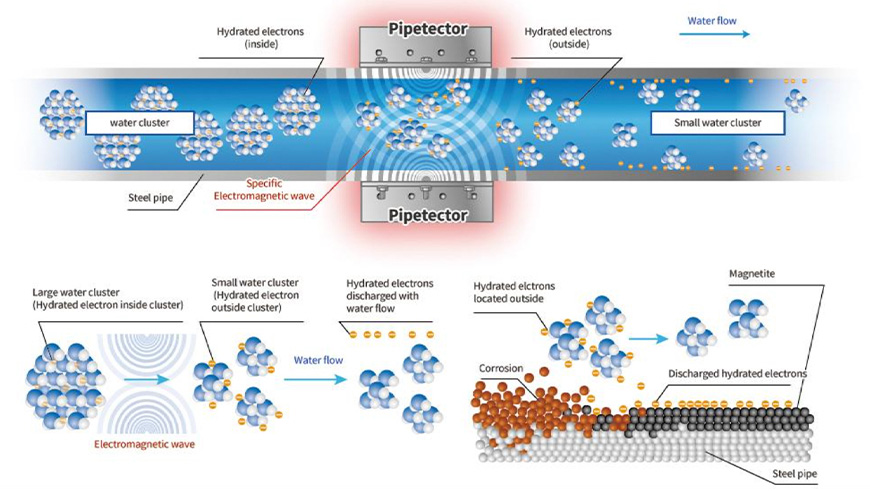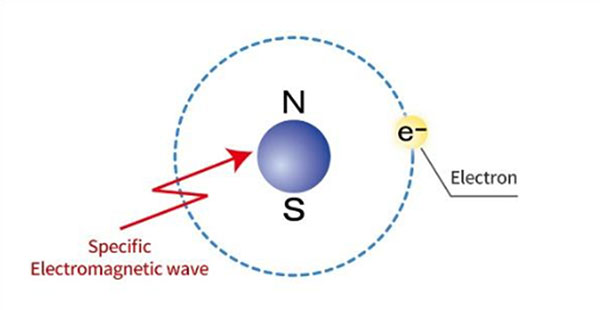Pipetector
Pipetector
Extend the life of pipes up to 40 years or more.
Metal pipes start rusting the day you first turn on the water. Whether servicing potable water or in a closed loop system, pipes are as important to the health of your building as your circulatory system is to yours.
Pipetector not just stops corrosion, but reverses it. Pipetector attacks orange rust, converting it to black rust (a.k.a. magnetite). Unlike orange rust, black rust is insoluble. In fact, black rust is such an effective insulator that many manufacturers plate their products with it, making them impervious to water damage. Black rust molecules are one-tenth the size of their orange counterparts. So, when Pipetector goes to work on a corrosion-based clog, it shrinks it by 90%, giving you back nearly full flow. Plus, the black rust left behind actually repairs and strengthens your pipes, much in the same way a stint is used to repair weakened arteries. Just think of the money you’ll save in plumbing repairs and building closures!
Pipetector is currently protecting over 4300 buildings from the high cost of corrosion, a few of which include Hospitals, Hotels, Water Authorities, Schools, Historic Buildings, Office Buildings, Factories, and Commercial Laundry Facilities.

Black rust (a.k.a. magnetite) does not dissolve in water and has a hard lattice structure with a volume smaller than 1/10 of that of red rust.
Converting red rust to black rust, Pipetector stops the elution of iron ions, leading to the clearing of water discoloration. Eventually, Pipetector removes the blockage caused by red rust, as black rust has a smaller volume than red rust has.

Corrosion (a.k.a. orange rust) can build up to form blockages in your pipes, severely impeding flow. Converting orange to black rust shrinks clogs by 90% or more, giving you back nearly full flow.
Pipetector is holds patents in the U.S, Japan, South Korea, and Taiwan.
Black rust has been used to protect all types of products dating as far back as 710 AD. Today, it’s used to stop rust from forming on everything from guns to teapots to locomotives.

- Electromagnetic waves relocate hydrated electrons inside water clusters to their outer surface.
- The hydrated electrons are then emitted as water flows inside pipes.
- The emitted electrons adhere to red rust inside pipes, reducing it to black rust.
NOTE: Hydrated electrons remain active for seven (7) hours, attacking rust as far as the water travels in that timeframe.



